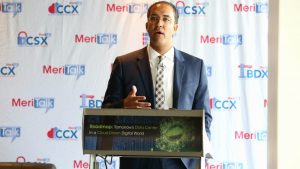Democratic District of Columbia Attorney General Karl Racine introduced legislation to the D.C. Council yesterday that aims to strengthen data breach protections for consumers.
The city of Los Angeles will move from local to state IT infrastructure in accordance with switching its mainframe to the California Department of Technology (CDT) State Data Center mainframe.
Scooter-rental companies in Los Angeles are split over whether to comply with the Los Angeles Department of Transportation’s (LADOT) request for them to provide real-time location data for their scooters.
San Antonio appointed Brian Dillard as its chief innovation officer earlier this month, a move that would make his interim position in the role permanent.
In another effort from Congress to expand transparency in U.S. election systems after, Sens. Ben Cardin, D-Md., Amy Klobuchar, D-Minn., and Chris Van Hollen, D-Md. announced today that they will reintroduce their Election Systems Integrity Act.
Sen. Kamala Harris, D-Calif., on Thursday introduced the Digital Service Act, which would increase funding for the U.S. Digital Service (USDS) and provide a conduit for state and local governments to get USDS grants to fund information technology (IT) modernization efforts.
The state of Vermont agreed on Thursday to suspend enforcement of its net neutrality lawsuit until a suit against the Federal Communication Commission (FCC) is resolved. Similarly, telecommunication sector trade groups, who were suing Vermont over the law, agreed to delay their litigation.
Rep. William Hurd, R-Texas, stressed at IBM’s Think Gov event today that America needs to lead the world in developing 5G wireless networks and artificial intelligence (AI) capabilities, especially with China on the rise as a voracious international competitor, and said successful development and application of the two technologies are inextricably linked.
For the second time in as many years, the tornado sirens in Dallas County, Texas have been hacked.
Jackson County, Ga., paid cybercriminals $400,000 to remove ransomware that infected its IT systems. The ransomware, known as Ryuk Ransomware, hit the county on March 1 and impacted multiple county agencies, including the Sheriff’s Office.














